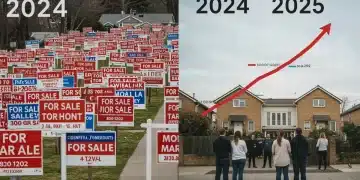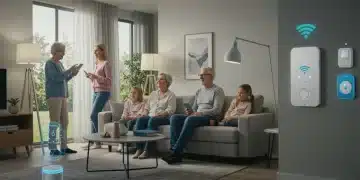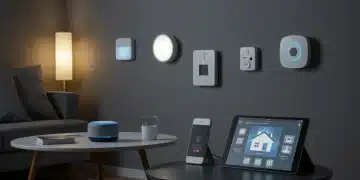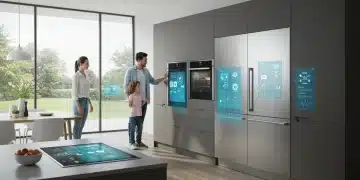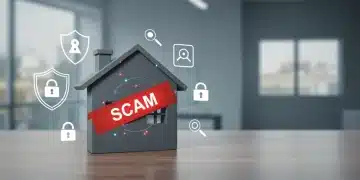Smart Home for Seniors: Top 7 Devices for Safety & Comfort in 2025
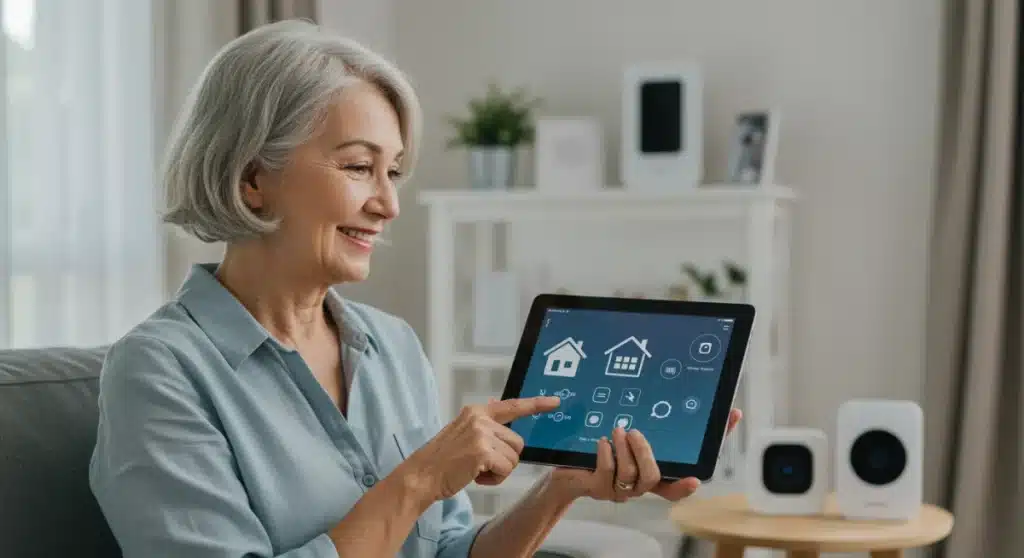
Smart Home for Seniors: Top 7 Devices for Safety and Comfort in 2025 (PRACTICAL SOLUTIONS) are rapidly emerging, offering crucial advancements in independent living and enhanced well-being for the elderly.
As of late 2024, the landscape of elder care is being reshaped by technology. The focus is increasingly on how Smart Home for Seniors: Top 7 Devices for Safety and Comfort in 2025 (PRACTICAL SOLUTIONS) can empower older adults to live independently and securely. This shift reflects a growing demand for innovative solutions that seamlessly integrate into daily life.
Enhanced Safety with Smart Monitoring Systems
Smart monitoring systems are at the forefront of ensuring senior safety within their homes. These systems leverage advanced sensors and AI to detect unusual patterns or potential hazards, providing immediate alerts to caregivers or family members. The goal is to offer a proactive layer of protection without compromising privacy or independence, a critical balance for effective elder care.
Recent developments indicate a move towards more non-intrusive monitoring, utilizing radar technology and passive infrared sensors rather than cameras. This approach respects the senior’s privacy while still providing vital information regarding their well-being and activities within the home environment. These systems are becoming increasingly sophisticated, learning individual routines to better identify anomalies.
Fall Detection and Prevention Devices
Fall detection remains a paramount concern for seniors aging in place. New devices arriving in 2025 are moving beyond wearable buttons, integrating seamlessly into the home environment. These include ceiling-mounted radar systems that can detect a fall without physical contact, and smart mats placed in high-traffic areas that alert if a person remains on the floor for an extended period. The aim is to reduce response times and minimize injury severity.
- Ceiling-Mounted Radar: Detects falls through motion patterns, no wearables needed.
- Smart Floor Mats: Placed strategically, they alert if a person is down for too long.
- Voice-Activated Emergency Buttons: Allow for hands-free calls for help.
Smart Lighting for Navigation and Well-being
Smart lighting systems offer far more than just convenience; they are vital tools for enhancing safety and comfort for seniors. Automated lighting can prevent falls by ensuring well-lit pathways, especially during nighttime hours. These systems can be programmed to respond to motion, time of day, or even voice commands, adapting to the senior’s needs and routines.
The latest innovations in smart lighting include circadian rhythm lighting, which adjusts color temperature and brightness throughout the day to support natural sleep-wake cycles. This can significantly improve sleep quality and overall mood, addressing common issues faced by older adults. Integration with other smart devices, such as motion sensors, ensures a seamless and responsive environment.
Automated Path Lighting
Automated path lighting is a simple yet profoundly effective solution. Sensors detect movement, illuminating hallways, bathrooms, and bedrooms as needed, thereby reducing the risk of nighttime falls. This system eliminates the need to fumble for light switches in the dark, providing a clear and safe path. Customization options allow for varying brightness levels, ensuring comfort and avoiding harsh, sudden light.
- Motion-Activated Sensors: Lights turn on automatically when movement is detected.
- Scheduled Lighting: Pre-set times for lights to adjust, mimicking natural light cycles.
- Voice Control Integration: Allows seniors to control lighting with simple verbal commands.
Voice-Activated Assistants and Hubs
Voice-activated assistants have become indispensable for seniors, providing a hands-free interface for a multitude of tasks. From setting reminders for medication to making calls to loved ones, these devices enhance communication and organization. Their intuitive nature makes them accessible even for those less familiar with technology, boosting confidence and independence.
In 2025, these assistants are evolving into central smart home hubs, capable of controlling all connected devices. This consolidation simplifies the user experience, allowing seniors to manage lighting, thermostats, entertainment, and even security systems through a single, familiar voice interface. The focus is on seamless integration and ease of use, minimizing complexity.
Smart Health Monitoring Devices
The convergence of smart home technology and health monitoring is creating powerful tools for proactive senior care. These devices allow for continuous, non-invasive tracking of vital signs and health metrics, offering valuable insights to seniors, their families, and healthcare providers. Early detection of changes in health can lead to timely interventions, improving outcomes.
Wearable devices are becoming more sophisticated, monitoring heart rate, sleep patterns, and activity levels. Beyond wearables, in-home sensors are emerging that can track breathing patterns and subtle physiological changes without direct contact. This discreet monitoring provides a comprehensive overview of a senior’s health status, promoting a sense of security and well-being.
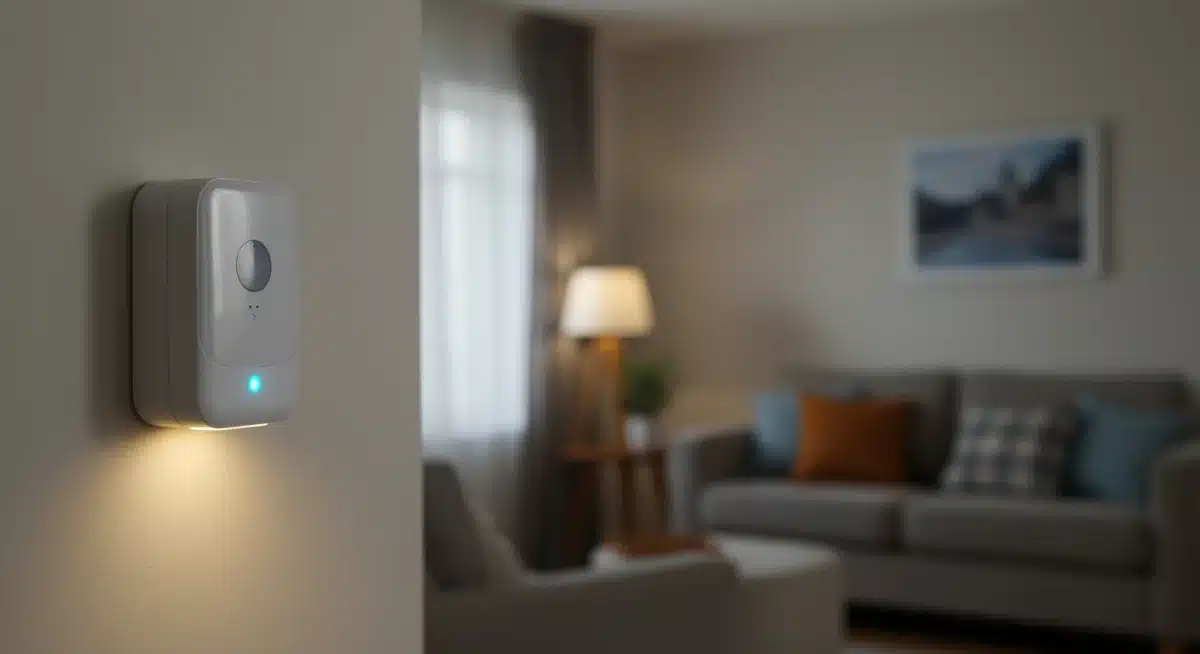
Remote Health Tracking
Remote health tracking capabilities are transforming how families and caregivers can monitor a senior’s health from a distance. Secure platforms allow authorized individuals to view data from smart health devices, ensuring that any concerning trends are quickly identified. This proactive approach supports independent living while maintaining a strong network of care.
- Continuous Vital Sign Monitoring: Tracks heart rate, blood pressure, and oxygen levels.
- Medication Reminders: Smart dispensers and voice assistants ensure timely medication adherence.
- Activity Trackers: Monitors daily movement and sleep patterns for overall health assessment.
Smart Thermostats and Environmental Control
Maintaining a comfortable and safe indoor environment is crucial for senior health. Smart thermostats offer precise control over home temperature, adapting to personal preferences and external weather conditions. These devices can learn routines and adjust settings automatically, ensuring optimal comfort while also promoting energy efficiency.
Beyond temperature, smart environmental controls extend to air quality monitoring and humidification. Sensors can detect pollutants or allergens, activating air purifiers as needed. This comprehensive approach to environmental management contributes significantly to a senior’s overall well-being, especially for those with respiratory sensitivities or allergies.
Smart Kitchen Appliances for Safety
The kitchen can be a place of both comfort and potential hazard for seniors. Smart kitchen appliances are designed to mitigate risks while enhancing convenience. Features like automatic shut-off for stoves and ovens prevent accidents, offering peace of mind for both seniors and their caregivers. These innovations reduce the likelihood of fires or gas leaks.
Furthermore, smart refrigerators can track food inventory and expiration dates, helping seniors maintain a healthy diet and reduce waste. Voice-controlled microwaves and ovens simplify cooking processes, making meal preparation safer and more accessible. These devices contribute significantly to maintaining independence in daily tasks.
Preventing Kitchen Accidents
Preventing kitchen accidents is a primary focus of smart appliance development for seniors. Automated shut-off features are critical, ensuring that appliances do not remain on unattended. Integrated sensors can also detect smoke or gas leaks, triggering alarms and sending alerts to emergency contacts. These layers of protection are invaluable for senior safety.
- Automatic Stove Shut-off: Prevents unattended cooking hazards.
- Smart Refrigerators: Track food freshness and assist with grocery lists.
- Voice-Controlled Appliances: Simplifies operation, reducing the risk of errors.
Emergency Response Systems and Wearables
Dedicated emergency response systems are evolving, integrating more seamlessly with smart home ecosystems. These systems provide immediate access to help during emergencies, often with a simple press of a button or a voice command. Wearable devices, such as smart watches with fall detection and emergency call features, offer protection both inside and outside the home.
The next generation of these systems includes proactive monitoring that can detect potential emergencies before they escalate. For instance, irregular activity patterns might trigger a check-in call from a monitoring service. This blend of reactive and proactive support creates a robust safety net for seniors, fostering greater independence and reducing anxiety for families.
| Key Device Category | Primary Benefit for Seniors |
|---|---|
| Smart Monitoring Systems | Proactive hazard detection and immediate alerts for safety. |
| Voice-Activated Assistants | Hands-free control, communication, and reminder management. |
| Smart Health Monitors | Continuous tracking of vital signs and remote health insights. |
| Smart Kitchen Appliances | Enhanced cooking safety and daily task assistance. |
Frequently Asked Questions About Smart Home for Seniors
Smart home technology significantly enhances senior independence, safety, and comfort. It provides solutions for fall detection, medication reminders, environmental control, and emergency assistance, allowing older adults to age in place with greater security and peace of mind.
Many modern smart home devices prioritize privacy by using non-intrusive technologies like radar-based fall detection and passive infrared sensors instead of cameras. Data encryption and user-controlled access settings further protect personal information, respecting the senior’s autonomy.
Manufacturers are increasingly designing smart home systems with user-friendliness in mind. Voice-activated controls, intuitive interfaces, and simplified setup processes make these technologies accessible for seniors, even those with limited tech experience. Training and support are often available.
Smart lighting is crucial for preventing falls by ensuring well-lit pathways, especially at night. Motion-activated lights and automated scheduling eliminate the need to navigate in the dark, significantly reducing accident risks and enhancing overall home safety for seniors.
Smart kitchen appliances offer enhanced safety features like automatic stove shut-off to prevent fires and gas leaks. They also provide convenience through voice control and inventory management, empowering seniors to maintain independence in meal preparation and daily kitchen tasks securely.
Looking Ahead: The Future of Senior Smart Homes
The rapid evolution of smart home for seniors: top 7 devices for safety and comfort in 2025 (PRACTICAL SOLUTIONS) signifies a transformative period in elder care. The focus will continue to be on creating integrated, intuitive, and non-intrusive systems that adapt to individual needs. Expect further advancements in AI-driven predictive analytics, allowing systems to anticipate potential issues before they arise, enhancing proactive care. Interoperability between different brands and platforms will also improve, forming more cohesive and user-friendly smart home ecosystems. This ongoing innovation promises an even brighter future for independent senior living.
